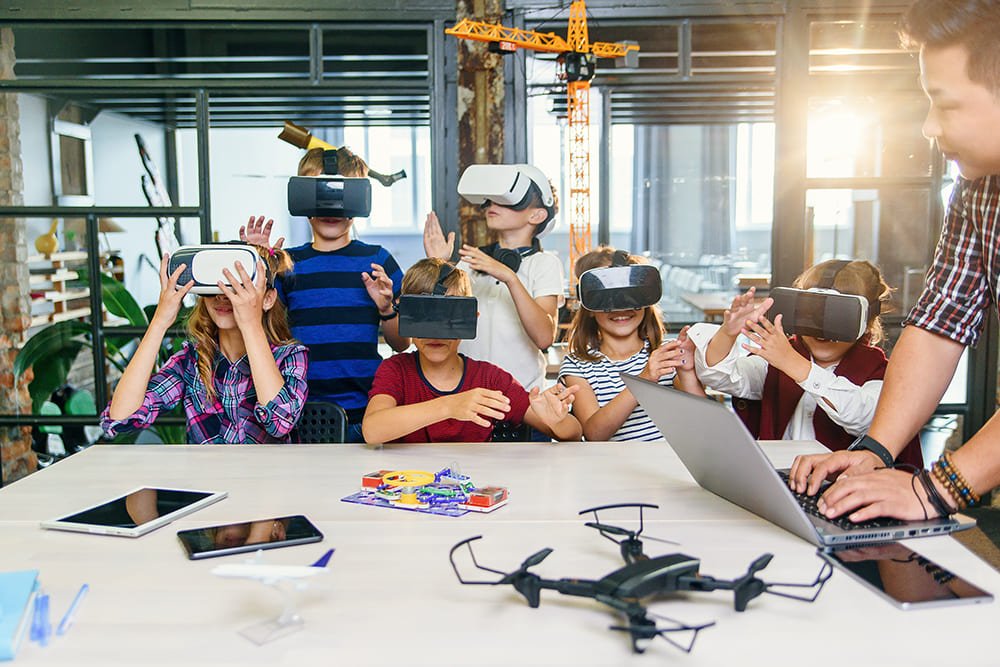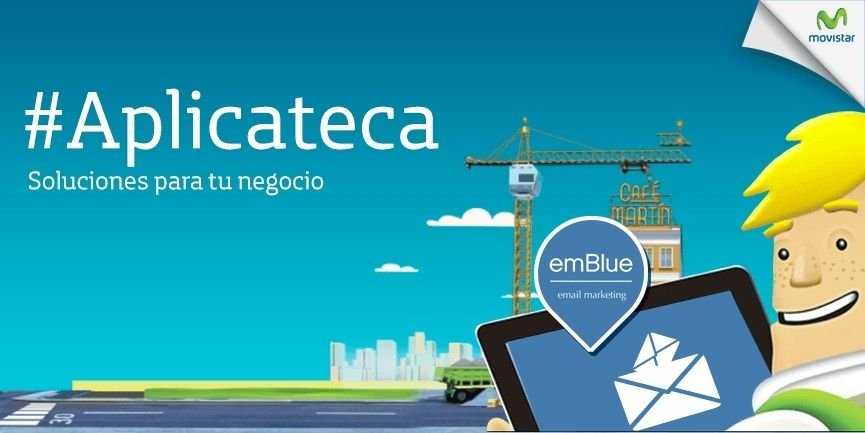Immersive learning with Augmented and Virtual Reality (AR/VR) is radically transforming the educational landscape by offering students engaging, interactive, and meaningful learning experiences. The integration of AR and VR technologies into classrooms and training environments enhances understanding and retention by simulating real-world scenarios. As the adoption of these technologies grows, educators and institutions must explore their potential to revolutionize the way students acquire knowledge.
What is Immersive Learning with AR/VR?
Immersive learning with AR/VR is a modern educational approach that uses Augmented Reality (AR) and Virtual Reality (VR) to create highly engaging, interactive, and realistic learning experiences. Unlike traditional learning methods that rely on textbooks and lectures, immersive learning allows students to experience content in a way that makes it feel real and hands-on.
- Augmented Reality (AR): AR enhances the real world by overlaying digital content, such as 3D models, animations, and interactive elements, using devices like smartphones, tablets, or AR glasses. For example, a student studying the human body can see a virtual heart beating in front of them.
- Virtual Reality (VR): VR creates a completely digital environment where students can interact with objects, explore virtual spaces, and practice real-world scenarios using VR headsets. This can be useful for history students walking through ancient Rome or medical students practicing surgeries in a risk-free setting.
By making learning more interactive, immersive learning with AR/VR improves understanding, retention, and engagement, making education more effective and enjoyable.
CHECK OUT: AI in Education: 7 Amazing & Simple Steps On How To Use AI To Write A Standard Teacher’s Weekly Lesson Note With Samples [AI in Education -The Future of Learning in 2025 and Beyond
The Rise of Immersive Learning with AR/VR
The traditional classroom model is undergoing an incredible transformation with the incorporation of digital innovations that provide experiential learning opportunities. AR and VR technologies create dynamic and interactive educational environments, making complex concepts more accessible and comprehensible. These advancements allow students to interact with 3D models, conduct virtual experiments, and explore historical or scientific phenomena without leaving their classrooms.
Defining Augmented Reality (AR) and Virtual Reality (VR)
Before delving deeper into their applications in education, it’s essential to distinguish between AR and VR:
- Augmented Reality (AR): AR overlays digital content onto the real world using devices like smartphones, tablets, or AR glasses. This technology enhances real-world interactions by providing additional information and interactive elements.
- Virtual Reality (VR): VR creates a fully immersive digital environment that users can explore using VR headsets and controllers. It completely replaces the physical surroundings, enabling users to experience simulations and virtual worlds.
READ ALSO: How to Make a Lesson Note for Nursery Class| 10 Amazing Tricks On How To Make A Lesson Note For Nursery Class With Practical Samples
The Astonishing Impact of Immersive Learning with AR/VR on Education
- Enhanced Engagement and Interactivity
Immersive learning with AR/VR significantly boosts student engagement by making lessons more interactive. Traditional teaching methods often rely on textbooks and static images, whereas AR and VR allow students to manipulate 3D objects, participate in virtual field trips, and interact with historical figures.
- Improved Knowledge Retention and Understanding
Studies have shown that experiential learning improves memory retention. With AR and VR, students can experience historical events, conduct virtual dissections, or explore the solar system in ways that reinforce learning. The ability to visualize abstract concepts helps students grasp complex subjects more effectively.
- Safe and Risk-Free Learning Environment
AR/VR technologies provide safe environments for learning hazardous or complex subjects. Medical students, for example, can practice surgeries in a virtual setting without real-life consequences. Similarly, engineering students can experiment with machinery in a simulated space before working with actual equipment.
- Personalized Learning Experiences
AR/VR-based learning can be tailored to individual learning paces. Students struggling with specific topics can revisit immersive lessons at their own speed, while those excelling can move on to more advanced concepts. This customization fosters a more inclusive learning environment.
- Bridging the Gap Between Theory and Practice
Subjects like physics, chemistry, and history often require a blend of theoretical knowledge and practical application. AR and VR bridge this gap by allowing students to conduct experiments, simulate historical events, and explore scientific concepts in an interactive manner.
READ ALSO: Turning Text into Engaging Video| 10 Powerful Steps On How To Instantly Turn Your Text Into Video For Content Creators With A Sample Video
Exciting Applications of Immersive Learning With AR/VR in Different Educational Fields
- Science and Medicine
AR and VR are revolutionizing medical education by allowing students to interact with 3D models of the human body, simulate surgeries, and explore physiological processes. These technologies provide realistic training scenarios without the need for cadavers.
- Engineering and Architecture
Engineering and architecture students can visualize and manipulate 3D models of structures, conduct virtual walkthroughs, and test architectural designs in a simulated environment. This enhances their understanding of spatial relationships and construction principles.
- History and Social Sciences
History students can experience historical events through virtual reenactments, explore ancient civilizations, and interact with historical figures in an immersive setting. This makes history more tangible and engaging.
- Language Learning
AR/VR facilitates language learning by simulating real-world conversations and cultural experiences. Students can practice speaking with AI-powered virtual tutors and immerse themselves in different linguistic environments.
- Special Education
Students with disabilities benefit greatly from AR/VR as these technologies offer tailored learning experiences. For instance, VR environments can help students with autism practice social interactions in a controlled setting.
SEE ALSO: How to Use ChatGPT for Weekly Lesson Notes: 10 Powerful Steps to Achieve Flawless Lesson Plans Like a Pro!
How the African Educational Sector Can Benefit from Immersive Learning with AR/VR
Despite facing technological challenges, the African educational sector has the potential to harness immersive learning through AR/VR in several ways:
- Bridging the Digital Divide
With increasing internet penetration and mobile technology use, AR-based educational applications can be accessed via smartphones, making immersive learning more accessible. Governments and private organizations can invest in affordable VR devices and digital learning centers.
- Expanding Access to Quality Education
Many African students lack access to well-equipped schools or experienced teachers. Immersive Learning With AR/VR can bring high-quality educational content to remote areas, enabling students to learn from virtual tutors and interact with digital laboratories.
- Enhancing Technical and Vocational Training
AR/VR can transform skill-based education by offering virtual apprenticeships in fields like agriculture, engineering, and medicine. Students can gain hands-on experience without the need for expensive physical infrastructure.
- Overcoming Language Barriers
Many African countries have diverse languages, making education challenging. AR/VR can provide multilingual immersive experiences, helping students learn in their native languages while also acquiring global skills.
- Partnering with EdTech Startups and NGOs
Collaboration with technology companies, NGOs, and international organizations can help bring AR/VR into African classrooms. Funding initiatives and policy support can accelerate adoption and innovation in immersive learning.
READ ALSO: Admission, Progress, and Withdrawal School Register: 5 Shocking Truths and 19 Powerful & Ultimate Step-by-Step Approaches for Seamless Student Record-Keeping
The Dark Side: Challenges and Considerations in Immersive Learning with AR/VR
- Cost and Accessibility
Despite their benefits, AR and VR technologies can be expensive to implement, limiting access for schools with tight budgets. Affordable solutions and government funding can help bridge this gap.
- Technical Limitations and Infrastructure
Not all educational institutions have the technical infrastructure to support AR/VR applications. High-speed internet, compatible devices, and technical expertise are required for seamless integration.
- Teacher Training and Curriculum Integration
Educators need proper training to effectively use AR/VR tools in classrooms. Additionally, curricula must be adapted to incorporate immersive learning experiences without disrupting existing educational frameworks.
CHECK OUT: SCHOOL MANAGEMENT STRATEGIES| 4 POWERFUL & CRUCIAL SCHOOL MANAGEMENT STRATEGIES EVERY SCHOOL PROPRIETOR MUST TAKE AFTER THE FIRST WEEK OF A NEW TERM
The Role of Government and the Private Sector in Bringing Immersive Learning With AR/VR to African Schools
For AR/VR to become widely accessible in African schools, both the government and private sector must play significant roles in implementation, funding, and infrastructure development.
- Government Initiatives and Policies
Governments across Africa must establish policies that encourage the integration of AR/VR in education. This includes:
- Funding for AR/VR Infrastructure: Governments should allocate budgets to equip schools with AR/VR devices, internet access, and digital content.
- Curriculum Development: Ministries of Education should incorporate AR/VR learning experiences into national curricula to align with global educational standards.
- Teacher Training Programs: Governments should invest in professional development programs to ensure educators are well-equipped to use immersive learning tools effectively.
- Public-Private Partnerships: By collaborating with tech companies, governments can accelerate the implementation of AR/VR in classrooms.
- Private Sector Contributions
Private companies, particularly in the EdTech industry, have the potential to drive innovation and supply necessary resources for AR/VR adoption in schools:
- Development of Affordable AR/VR Solutions: Companies can create cost-effective VR headsets and AR-enabled applications tailored to African schools.
- Corporate Social Responsibility (CSR) Initiatives: Businesses can sponsor AR/VR education projects, donating devices and software to underserved communities.
- Investment in Local Content Creation: Tech firms can partner with educators to develop culturally relevant AR/VR learning materials aligned with African curricula.
- The Role of School Owners and Administrators
School owners and administrators play a vital role in adopting immersive learning technologies within their institutions:
- Investment in AR/VR Infrastructure: Private schools can lead the way by integrating AR/VR into their classrooms, setting an example for public institutions.
- Training Educators: School management must ensure teachers receive adequate training in using immersive learning tools.
- Collaboration with Tech Providers: Schools can form partnerships with EdTech companies to gain access to cutting-edge AR/VR educational solutions at subsidized rates.
- Parental and Community Engagement: By educating parents on the benefits of AR/VR learning, schools can secure support for funding and expansion.
Frequently Asked Questions (FAQ) About Immersive Learning With AR/VR
- Is AR/VR learning expensive to implement in African schools?
Yes, initial costs can be high, but partnerships with tech companies and government funding can make these technologies more affordable and accessible.
- Do students need special equipment to engage in immersive learning?
Yes, AR requires smartphones, tablets, or AR glasses, while VR requires headsets and controllers. However, mobile-based AR applications can be a cost-effective alternative.
- How can schools without internet access benefit from immersive learning?
Offline AR/VR applications can be developed and preloaded onto devices, allowing students to experience immersive learning without a constant internet connection.
- What subjects benefit the most from AR/VR learning?
Subjects like science, medicine, history, engineering, and language learning greatly benefit from AR/VR integration.
- How can teachers be trained to use AR/VR in the classroom?
Workshops, online training modules, and partnerships with EdTech companies can help educators acquire the necessary skills to implement AR/VR learning effectively.
SEE ALSO: WAEC 2025 Registration : Deadlines, Study Tips, Success Secrets from Top Scorers & 8 Easiest Steps For School Candidates, And Private Candidates Registrations
Recommendations for Implementing AR/VR in African Schools
- Develop Cost-Effective Solutions: Governments and private companies should collaborate to produce affordable AR/VR learning tools suitable for African schools.
- Invest in Teacher Training: Schools should provide teachers with adequate training on how to integrate Immersive Learning With AR/VR into their teaching methods.
- Expand Infrastructure: Governments should focus on improving internet access and electricity supply to facilitate digital learning.
- Encourage Public-Private Partnerships: Collaboration between governments, tech companies, and NGOs can help scale AR/VR adoption.
- Create Localized Content: Immersive Learning With AR/VR applications should be adapted to African curricula and cultural contexts to maximize effectiveness.
- Raise Awareness: Educators, parents, and policymakers should be educated on the benefits and potential of immersive learning technologies.
READ MORE: School Diary | 8 Expert Steps to Accurately Record School Work in the Weekly School Diary Plus Amazing Samples Of School Diary
Conclusion
Immersive learning with Augmented and Virtual Reality (AR/VR) has the potential to revolutionize education worldwide, including in Africa. Despite technological setbacks, strategic investments, partnerships, and policy support can make these innovations accessible and beneficial. As education continues to evolve, Immersive Learning With AR/VR will play a crucial role in shaping future learning experiences across the globe.
For more insights on immersive learning with AR/VR, visit EdTech Magazine to explore the latest trends and innovations in educational technology.





